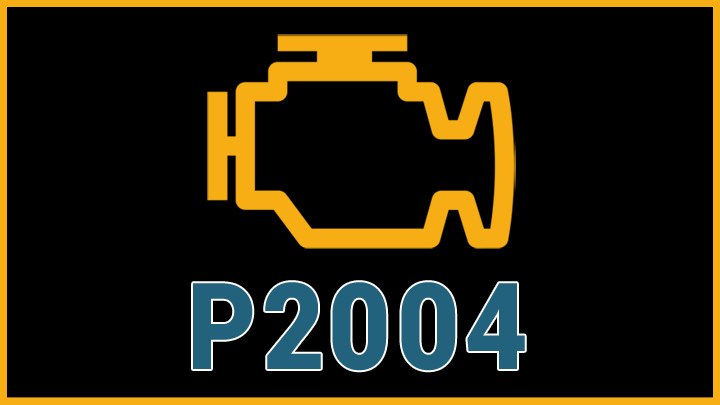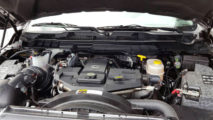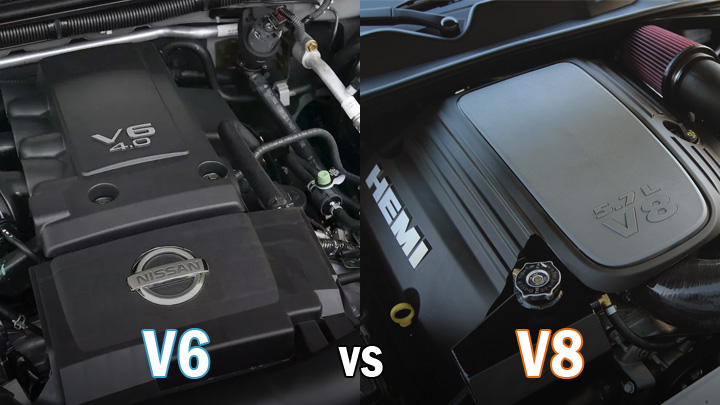Last Updated on June 29, 2021
The internal combustion engine has advanced significantly over the past 100 years. A host of technological advancements have been pioneered, many of which are aimed at reducing emissions by boosting combustion efficiency.
While these advancements have proved quite beneficial as a whole, the engines powering our vehicles have become far more intricate than they were only a couple of decades prior.
This has created somewhat of a hardship for those who strive to repair their own vehicles, without making a visit to their local repair center. Many diagnostic trouble codes now allude to issues with various components that some DIY mechanics are not yet familiar with, causing a significant amount of confusion.
One such fault code is DTC P2004, which is indicative of variable intake manifold related issues. While variable intake manifolds have been relatively popular since the 1990s, many are unfamiliar with the nuances associated with such technology, or standard protocol for repair when issues pertaining to such systems arise.
Read on to learn more about DTC P2004, and how to proceed should you be faced with an issue of this nature in the future.
What Does Code P2004 Mean?
Diagnostic trouble code P2004 signifies that the actuator tasked with varying the position of an intake manifold’s runners is stuck in the “open” position. Therefore, the actuation of this runner cannot be completed as desired.
This, in turn, can negatively impact your engine’s operating efficiency, as intake air is unable to flow as desired by the PCM (Powertrain Control Module).
In the past, intake manifolds featured fixed runners, which were used to direct airflow intended for use in combustion. These runners were positioned to use this air in the most efficient way possible.
However, a significant number of today’s vehicles are now powered by engines that feature variable intake manifolds. These specialty manifolds feature indexable runners, which can be repositioned on-the-fly, in response to various operational inputs.
A vehicle’s PCM determines the positioning of an engine’s runners within a variable intake manifold, based upon signals sent by several additional sensors. These inputs most notably include signals sent by an engine’s Mass Air Flow Sensor (MAF) and Barometric Pressure Sensor (BARO). Some PCMs also rely upon data concerning the relative position of an engine’s EGR Valve.
Assuming that all input signals are accurately delivered, an engine’s PCM will call for the intake’s runners to be positioned in the best possible position for efficient air delivery.
During this process, the PCM is receiving continual feedback, regarding the runner’s relative position. If the actual position of the runner itself does not match that which is being called for by the PCM, an active DTC is logged.
In the case of DTC P2004, a vehicle’s PCM has determined that the intake’s runners are not responding as expected, due to their actuator being stuck in the “open” position. As a result, all advantages offered by the operation of such a system are negated.
See Also: Intake Manifold Leak Symptoms
Symptoms of Code P2004

The exact symptoms associated with diagnostic trouble code P2004 typically vary to some degree, on a case-by-case basis. However, a number of particular symptoms tend to stand out above the rest, in terms of how commonly they are experienced.
The following are several of the most symptoms associated with DTC P2004.
- Poor fuel economy
- Erratic idle
- Decreased low end torque
- Hesitation during acceleration
Causes of Code P2004
The root cause of DTC P2004 often varies from one particular make and model of vehicle to the next. However, several key factors tend to contribute to such issues with far greater frequency than others.
The following are several common root cases of diagnostic trouble code P2004.
- Broken or disconnected vacuum lines
- Obstructed Vacuum control solenoid
- Faulty IMRC solenoid
- Damaged IMRC wiring
- Corroded or otherwise damaged IMRC connector
- Loose or damaged IMRC butterfly hardware
- Broken IMRC butterfly valve plates
- Primary issues pertaining to input devices (EGR, BAR, MAF)
Is Code P2004 Serious?
Diagnostic trouble code P2004 is considered relatively serious, due to its negative implications on a vehicle’s drivability. While such issues seldom lead to stalling, one can expect for their vehicle to surge or idle erratically. Fuel economy is also likely to suffer when faced with a variable intake manifold related issue.
In any event, DTC P2004 should be diagnosed, and its root cause addressed, at the first available opportunity. If you do not feel up to the task of performing such repairs yourself, or you are simply short on available time, then you should schedule an appointment with a nearby service center as soon as possible.
How to Fix

The exact repair protocol for DTC P2004 typically varies from one make and model of vehicle to the next, as each variable intake manifold differs from that of other manufacturers.
For model-specific repair instructions, one should always consult factory service literature from the manufacturer of their vehicle. However, the following steps will provide you with the basic procedure for diagnosis and repair of DTC P2004.
#1 – Check For Accompanying Codes
Prior to beginning any further diagnostic efforts, check for the presence of any additional trouble codes with the use of a good OBD-II scan tool. Each additional code should be diagnosed before proceeding.
#2 – Inspect All Vacuum Hoses (if applicable)
If your vehicle’s intake runners are vacuum actuated, it is imperative to check for proper routing and connection of all associated hoses. Carefully inspect each vacuum hose for signs of dry-rot and splitting, repairing any defects that become apparent.
#3 – Inspect IMRC Wiring
You will now inspect all wiring associated with your engine’s IMRC actuator (Intake Manifold Runner Control) for signs of damage.
Carefully search for any pinched, frayed, or otherwise damaged wires, and make any repairs that are necessary. You should also check any connectors within this circuit for signs of corrosion or pin misalignment.
#4 – Inspect IMRC Plates and Linkage
If no faults have been uncovered to this point, it will be necessary to inspect your IMRC’s butterfly valve plates and associated linkage. Check for any apparent binding in the IMRC’s linkage, and ensure that all butterfly valve plates are in proper operating condition.
#5 – Command Operation Via Scan Tool
If the root cause of your engine’s P2004 fault has yet to surface, you will now need to verify the integrity of the IMRC actuator. This can be done with the use of a quality bi-directional scan tool.
With a scan tool in hand, you will command the IMRC actuator to articulate the attached runner from one end of its operation sweep to the other. If the IMRC actuator does not respond, replacement is advised.




